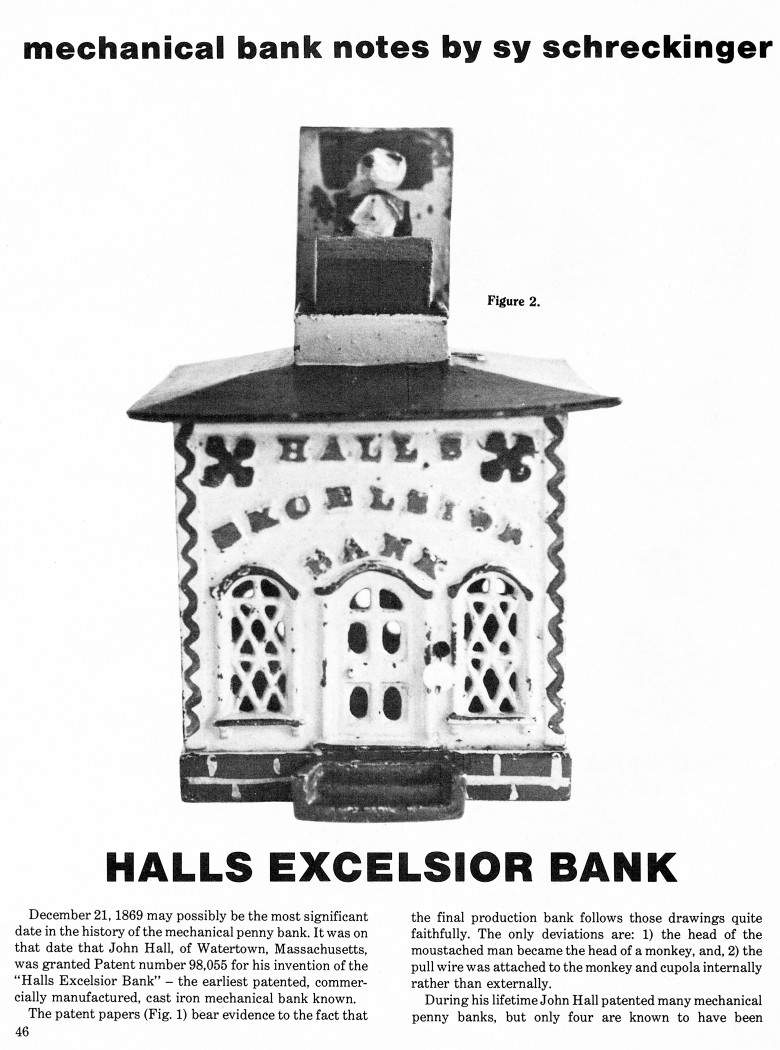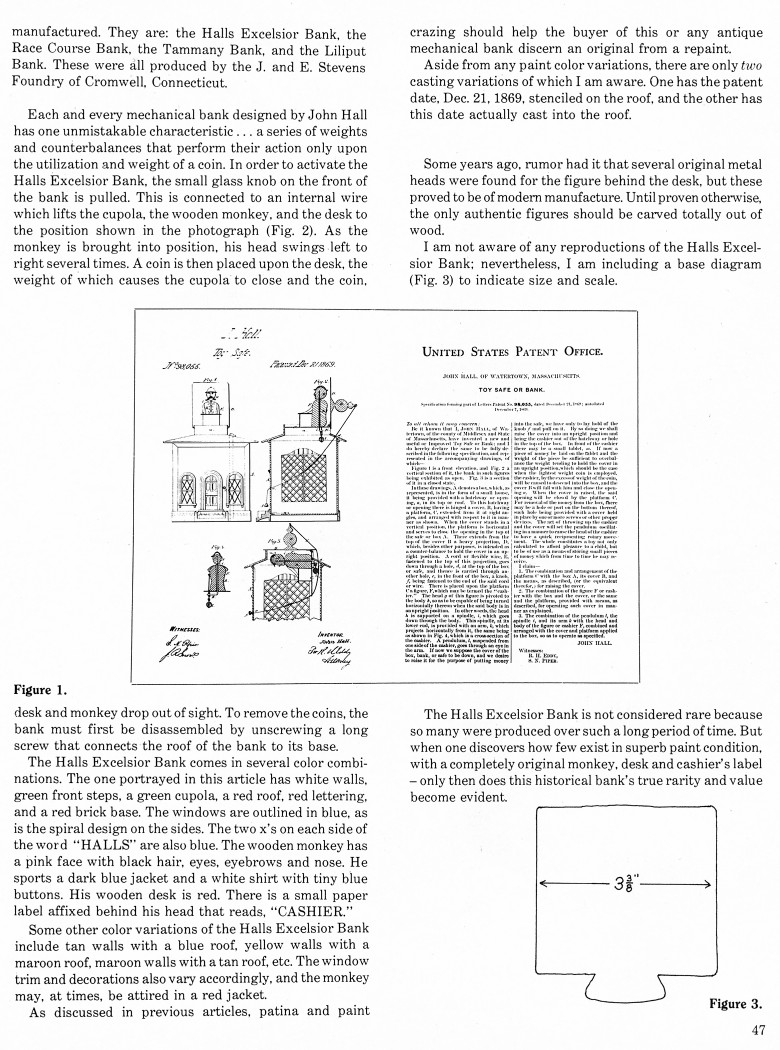|
Halls Excelsior
by Sy Schreckinger – ANTIQUE TOY WORLD Magazine – February,
1984
December 21, 1869 may possibly be
the most significant date in the history of the mechanical penny bank. It
was on that date that John Hall, of Watertown, Massachusetts, was granted
Patent number
98,055 for his invention of the "Halls Excelsior Bank" – the
earliest patented, commercially manufactured, cast iron mechanical bank
known.
The patent papers (Fig. 1) bear evidence to the fact that the final
production bank follows those drawings quite faithfully. The only
deviations are: 1) the head of the mustached man became the head of a
monkey, and, 2) the pull wire was attached to the monkey and cupola
internally rather than externally.
During his lifetime John Hall patented many mechanical penny banks,
but only four are known to have been manufactured. They are: the Halls
Excelsior Bank, the Race Course Bank, the Tammany Bank, and the Liliput
Bank. These were all produced by the J. and E. Stevens Foundry of
Cromwell, Connecticut.
Each and every mechanical bank designed by John Hall has one
unmistakable characteristic ... a series of weights and counterbalances
that perform their action only upon the utilization and weight of a coin.
In order to activate the Halls Excelsior Bank, the small glass knob on the
front of the bank is pulled. This is connected to an internal wire which
lifts the cupola, the wooden monkey, and the desk to the position shown in
the photograph (Fig. 2). As the monkey is brought into position, his head
swings left to right several times. A coin is then placed upon the desk,
the weight of which causes the cupola to close and the coin, desk and
monkey drop out of sight. To remove the coins, the bank must first be
disassembled by unscrewing a long screw that connects the roof of the bank
to its base.
The Halls Excelsior Bank comes in several color combinations. The one
portrayed in this article has white walls, green front steps, a green
cupola, a red roof, red lettering, and a red brick base. The windows are
outlined in blue, as is the spiral design on the sides. The two x's on
each side of the word "HALLS" are also blue. The wooden monkey has a pink
face with black hair, eyes, eyebrows and nose. He sports a dark blue
jacket and a white shirt with tiny blue buttons. His wooden desk is red.
There is a small paper label affixed behind his head that reads,
"CASHIER."
Some other color variations of the Halls Excelsior Bank include tan
walls with a blue roof, yellow walls with a maroon roof, maroon walls with
a tan roof, etc. The window trim and decorations also vary accordingly,
and the monkey may, at times, be attired in a red jacket.
As discussed in previous articles, patina and paint crazing should
help the buyer of this or any antique mechanical bank discern an original
from a repaint.
Aside from any paint color variations, there are only two casting
variations of which I am aware. One has the patent date, Dec. 21, 1869,
stenciled on the roof, and the other has this date actually cast into the
roof.
Some years ago, rumor had it that several original metal heads were
found for the figure behind the desk, but these proved to be of modem
manufacture. Until proven otherwise, the only authentic figures should be
carved totally out of wood.
I am not aware of any reproductions of the Halls Excelsior Bank:
nevertheless, I am including a base diagram (Fig. 3) to indicate size and
scale.
The Halls Excelsior Bank is not considered rare because so many were
produced over such a long period of time. But when one discovers how few
exist in superb paint condition, with a completely original monkey, desk
and cashier's label – only then does this historical bank's true rarity
and value become evident.
|


